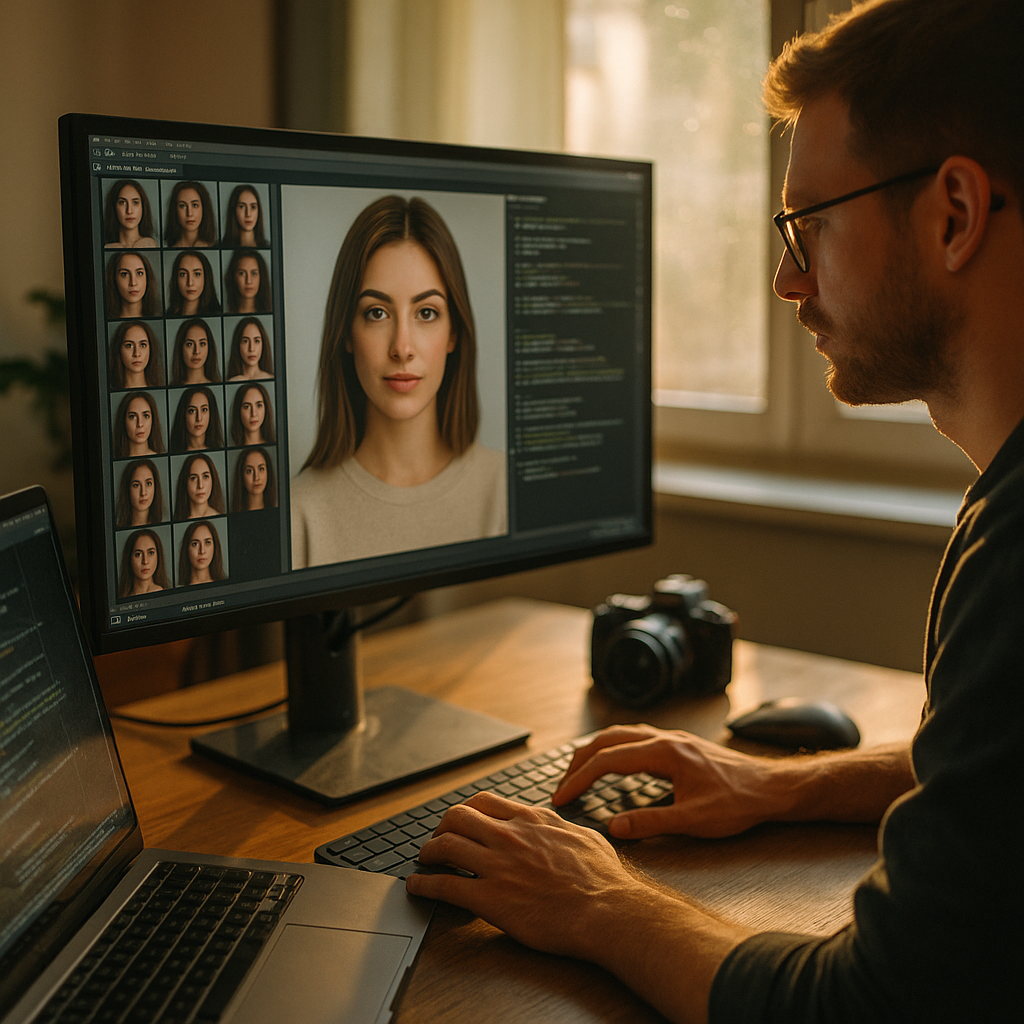Using Generative Adversarial Networks (GANs) to create hyper-realistic virtual influencers is transforming digital marketing, entertainment, and social media landscapes in 2025. Brands and creators are harnessing this AI technology for engaging audiences like never before. Discover how GAN-driven virtual personalities deliver authenticity, drive ROI, and change our understanding of influence in a digital-first world.
What Are Generative Adversarial Networks and How Do They Work?
Generative Adversarial Networks (GANs) have emerged as a foundational tool in AI research, enabling machines to produce realistic synthetic data that often rivals that created by humans. Invented by Ian Goodfellow and his team, GANs consist of two neural networks— the generator and the discriminator— engaged in a game-like scenario. The generator creates new data instances, while the discriminator evaluates them for authenticity. Over time, the generator improves, crafting outputs (such as images or videos) that become increasingly convincing and lifelike. This process is crucial for the creation of hyper-realistic virtual influencers, ensuring visually compelling digital personas indistinguishable from real humans.
The Rise of Hyper-Realistic Virtual Influencers in Social Media
Virtual influencers powered by GANs now hold prominent positions on platforms like Instagram, TikTok, and YouTube. Unlike traditional influencers, these AI-generated personalities never age, tire, or run into reputation scandals (unless programmed to do so). In 2025, brands cite that virtual influencers enjoy up to 30% higher engagement rates compared to human counterparts, according to Global Digital Media Insights. Hyper-realism— powered by GAN technology— delivers photorealistic skin textures, expressive emotions, and dynamic video content that captivates audiences. The emotional connection fostered with followers is so strong that many users struggle to differentiate between virtual and real personas— blurring the boundary between what’s real and what’s artificial online.
How GANs Enable Unique Storytelling: Creating Authentic Digital Personas
The creative potential unlocked by GAN technology extends far beyond visual fidelity. Brands and digital creators can engineer hyper-realistic virtual influencers with unique backstories, personalities, and cultural appeal— all tailored for target demographics. By leveraging GANs for facial expressions, motion, and environmental consistency, creators ensure consistency and believability across all content. Authenticity becomes programmable: brands can introduce limited-edition digital clothing lines, create interactive story arcs, or even address social causes with virtual advocates. This level of narrative control allows for micro-targeted campaigns, fostering deeper and more personal engagement with followers as documented in recent European Marketing Tech Reports.
Advantages of Hyper-Realistic Virtual Influencers for Brands
Adopting GAN-generated virtual influencers offers multiple advantages for marketing and brand communications:
- Consistency: Unlike human influencers, virtual personas are always available, free from scheduling hiccups or personal controversies.
- Cost-effectiveness: After initial development, brands save on travel, wardrobe, and production expenses.
- Creative freedom: GANs enable brands to deploy influencers who break traditional beauty, gender, or cultural molds.
- Real-time content: AI-driven influencers adapt instantly to market trends and emerging news stories, rolling out timely campaigns without bottlenecks.
- Scalability: Brands can create and manage entire rosters of virtual influencers to reach different market segments worldwide without duplicating resources.
Major companies in fashion, cosmetics, and technology sectors now report a 24% increase in ROI when campaigns are led by virtual influencers, according to a 2025 Social Commerce Review.
Ethical Considerations and the Future of Digital Authenticity
The surge of hyper-realistic AI-generated personas introduces pressing ethical questions. Content creators and brands must transparently disclose AI-generated influencers to avoid misleading audiences. Privacy debates persist, particularly around the use of real individuals’ facial data in training GANs. Regulators and industry watchdogs now set guidelines: every virtual influencer must visibly label their artificial identity, and digital marketers are encouraged to comply with the new European Virtual Transparency Act (EVTA) of 2025. Trust remains the cornerstone of influencer marketing; as such, reputable brands adopt clear disclosure policies, uphold data security measures, and support ongoing digital literacy initiatives to ensure audiences understand the distinction between human and AI.
Key Challenges in Developing and Managing GAN-Based Virtual Influencers
While the possibilities are exciting, creating and maintaining hyper-realistic virtual influencers poses distinct challenges:
- Resource Intensity: High-quality GAN training demands significant computational power and time, making initial development costly.
- AI Bias: If training data is skewed, GANs may unintentionally perpetuate societal biases in the design of virtual influencers, affecting representation and inclusivity.
- Audience Perception: Overuse or poor transparency can cause follower backlash, damaging brand reputation.
- Complexity of Ongoing Engagement: Regularly updating a virtual influencer’s content, responding to trends, and sustaining credibility require expert teams in AI, design, and digital communication.
Solving these challenges involves careful curation of datasets, cross-disciplinary collaboration, and adoption of industry-wide standards for AI ethics and transparency.
Conclusion: Harnessing GANs for Next-Level Digital Influence
Generative Adversarial Networks now empower brands and creators in 2025 to build hyper-realistic virtual influencers that redefine how digital influence is cultivated. By prioritizing transparency and creativity, savvy marketers unlock deep engagement and authenticity— but must balance innovation with ethical responsibility for continued success in the rapidly evolving digital world.
Frequently Asked Questions about GANs and Hyper-Realistic Virtual Influencers
-
What is a hyper-realistic virtual influencer?
A hyper-realistic virtual influencer is an AI-generated digital persona engineered to look, move, and behave like a real human, often created through advanced technologies such as GANs. -
How do brands use these virtual influencers?
Brands utilize virtual influencers for social media campaigns, brand endorsements, storytelling, event hosting, and even social activism— maximizing reach and engagement with diverse audiences. -
Are GAN-based virtual influencers regulated?
Yes. In 2025, regulations like the European Virtual Transparency Act require transparent disclosure when virtual personas are used, safeguarding digital authenticity and consumer trust. -
What skills are needed to create a GAN-based virtual influencer?
Development requires expertise in AI, 3D modeling, digital storytelling, data science, and cross-functional collaboration between creative and technical teams. -
Can virtual influencers replace human influencers entirely?
Not entirely. While virtual influencers excel in scalability and control, human influencers still offer genuine lived experiences, cultural nuances, and emotional resonance that many brands and audiences value.
